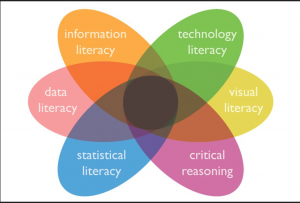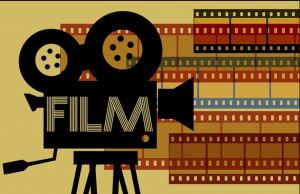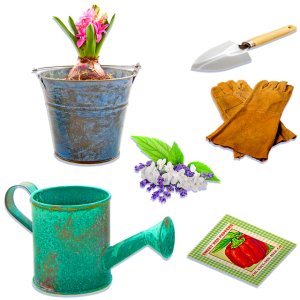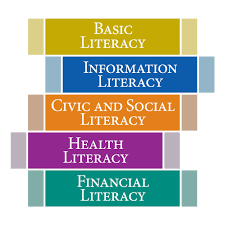Students are assigned textbooks and other reading for their courses, but sometimes you just want a good book to read. It could be a recently published novel, or you might be working your way through a “Great Books” list. Here are some ways you can find a book in almost any genre you desire.
![]()
End-of-year wrap-ups
Many newspapers and magazines use the end of the year as an excuse – as if they needed one – to publish their “must read” lists or the Best Books of <insert year here>. While NPR releases news about books, book reviews, and interviews with authors throughout the year but handpicks great reads each year.
The New York Times also publishes book reviews throughout the year. Each November, the paper releases its list of 100 Notable Books, followed by a live event identifying the 10 Best Books of <YEAR> selected from that list.
Publications issuing annual “best book” lists are terrific sources of inciteful book reviews throughout the year. Some of my favorites include:
- The New York Review of Books
- London Review of Books
- Times Literary Supplement
- Paris Review
- Boston Review
- Washington Post Book World
- Los Angeles Review of Books
- Bookreporter
Watching an interview with an author is another way to determine whether a book might interest you. Fresh Fiction can help you identify books and authors featured in national media. In addition to occasional appearances by an author on a newscast, authors are interviewed regularly on BookTV .
If you’re unsure whether you’d like a book and want to read a selection before you purchase the title (or visit the library to borrow it), you might consult BookSpot First Chapters. Don’t forget to use the left-hand navigation bar to identify other resources for book reviews and awards by genre.
Literary prize winners (and runner ups)
You might also turn to entities that award prizes to authors for their works each year. Don’t limit your search to the “winners” of this year or prior years’ as the finalists can sometimes be even better. Here are a few of the entities awarding authors for their works:
- The Pulitzer Prize for Books includes fictional works, history, biography, poetry, and general non-fiction.
- The Man Booker Prize is awarded to the best novel written in English and published in the United Kingdom or Ireland.
- The National Book Foundation celebrates American literature with its National Book Awards.
- Each year, the National Book Critics Circle presents awards for the finest books published in English (in the USA) in six categories: Fiction, nonfiction, biography, autobiography, poetry, and criticism.
Goodreads.com encourages browsing for titles by genre, such as biography, classics, fiction, graphic novels, historical fiction, horror, memoir, nonfiction, romance, science fiction, thriller, and travel. There is also a list of Goodreads Choice Awards for the year’s best books in each genre. Then there’s Kobo with its best books, eBooks and audiobooks that define the year.
Book club choices
Book club online discussion groups are a great resource for finding new titles to read and assessing how others have enjoyed them. Some even include guides for conducting group discussions about the book that can be helpful for thoughtful readers. From FreeBookNotes, you’ll be able to link to study guides from SparkNotes, CliffNotes, BookRags, and more to help you understand the book you’ve selected to read.
Book review sites consulted by booksellers and librarians
Detailed abstracts, book summaries, or even a sample chapter may be available on:
- AllReaders.com, featuring detailed book reviews from many genres, including science-fiction, fantasy, mysteries, and more.
- BookBrowse.com includes reviews, previews, “behind the book” backstories, author interviews, and research guides. Click the Read-Alikes tab in the top navigation bar. If you find a book you like, the editors will suggest books you are probably going to like equally as well.
- BookPage.com contains book reviews and author interviews.
- The Complete Review (complete-review.com) highlights “books in the news,” books “most worthy of your attention,” and foreign books not yet translated into English.
- Curled Up with a Good Book (curledup.com) includes reviews of fiction and non-fiction books, romance, sci-fi/fantasy, graphic novels, and audiobooks.
- Jellybooks.com lets you download 10% of the text before purchase.
- Shelf Awareness (shelf-awareness.com) is a twice-weekly e-newsletter containing detailed abstracts and reviews of 25 recommended titles scheduled for release that week.
- Ron Hogan’s blog (Beatrice.com/wordpress) often features new authors.
- Track New Book (tracknewbook.com) helps you find new books related to the websites you visit, sending you an email as new books are published by authors you track (discovery.tracknewbook.com).
- Lovereading UK (lovereading.co.uk) has online tools to help you choose your next read. The free membership site includes 10-15 page opening extracts and samples of audiobooks. Personalized newsletters cover the latest book recommendations in fiction and non-fiction.
- Gnooks (gnooks.com) uses a Gnod engine to learn what an individual might like to read. Enter three authors you like and Gnooks will suggest what you should read next.
- Complete the statement, “I’ve just finished reading __________ by _______” and The Book Seer (bookseer.com) will supply the answer.
- WhichBook (openingthenbook.com/whichbook) offers choices based on mood/emotion, plot shape, type of main character (by age, race, gender), or country in which the book is set.
- FictionDB (fictionDB.com) has extensive author bibliographies for the authors you like and want to read. You can even set up a “wish list” for future reading
Finding book reviews using online databases available at NOVA Libraries
NOVA students can access book reviews published in major newspapers and magazines. Use the “Find Journal” link on the library homepage and type the title of the work you seek. For example, the New York Times Book Review. Another tab will open featuring the databases where this title is available, including ProQuest Global Newsstream, for example.
EBSCO Academic Search Complete databases includes journals and magazines with book reviews. To find them, use the Advanced Search page; under Document Type, choose Book Reviews.
Two databases in the NOVA Libraries that specialize in literature are the GALE Literary Index and JSTOR. To reach these titles, begin on the library homepage and click All Databases (A-Z):
- Click “G” and select GALE Databases; then click the link to GALE Literary Index and begin your search.
- Click “J” and select JSTOR. To find book reviews, use the Advanced Search page. Type the title of a book or keyword and Narrow Your Search, Item = Review.
Have you got a favorite way of finding books to read? Use the Comments section to let us know.




